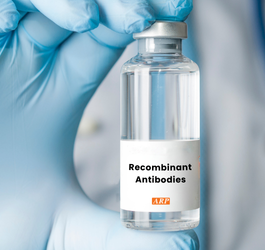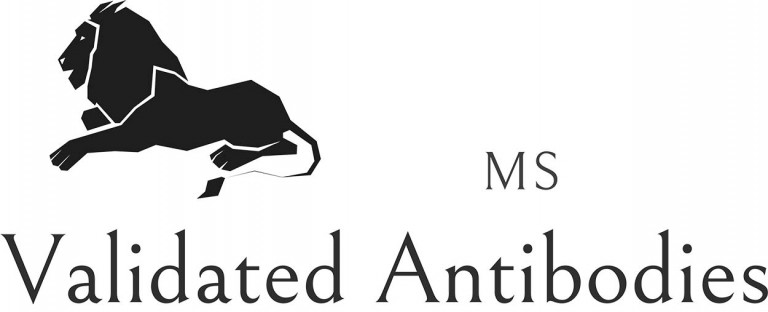Monoclonal, Polyclonal & Recombinant Antibodies: How they differ and how they are made

In this blog, we explore the common types of antibodies used in research and how they are manufactured.
ARP American Research Products stocks the highest quality antibodies and reagents for scientific research from suppliers globally. Looking for antibodies for your next research project? Browse our extensive antibody catalog on ARP1.com.
Antibodies are commonly generated in vivo by two methods:
Polyclonal Antibodies
Polyclonal antibodies are created by introducing an antigen and an adjuvant into an animal, which triggers an immune response. Although rabbits are commonly used, other animals such as goats, sheep, and mice may also be used. The resulting polyclonal antiserum, made of a mixture of immunoglobulins, is obtained by extracting blood from the animal. Once produced, polyclonal antibodies are only available in limited quantities and will eventually become depleted.
Monoclonal Antibodies
Monoclonal antibodies are typically generated by immunizing an animal, commonly mice or rats. Serum from the immunized animal is collected followed by harvesting the spleen to isolate the antibody-producing B-lymphocytes. The B-cells are fused with cells from an immortal myeloma cell line to create hybridomas capable of producing antibodies. The hybridomas producing a singular antibody clone are cultured in vitro and the best performers are selected by assay against the target antigen of the secreted antibody.
After generating the hybridomas, monoclonal antibodies are manufactured in one of two ways:
- By in vitro tissue culture of the hybridoma, whereby the hybridoma is grown in conditions that maximize secreted antibody yield.
- By in vivo injection into the peritoneal cavity of a mouse or rat. Highly concentrated antibody is produced in the ascitic fluid as the hybridoma multiplies. The expressed antibody is then harvested from the tissue culture medium or abdominal cavity fluid and purified if required.
Recombinant Antibodies
Phage Display
Phage display was first described in 1985 by George Smith who demonstrated the display of peptides on the surface of bacteriophages [1]. In 1991, phage display was used to display antibodies [2]. The displayed antibody could then be screened for its interaction with a protein of interest.
Phage display is a technique that uses a library of genetically engineered gene fragments encoding antibody heavy and light chains. The gene fragments are cloned into bacteriophage vectors called phagemids, which are then used to infect E. coli. As a result, the antibody chains are expressed and displayed on the surface of the bacteriophage. This allows the antibody library, consisting of combined heavy and light chain fragments, to be screened against an immobilized antigen of interest.
The phage-expressing antibody specific to the target will stay bound to the immobilized protein. Bound phage can then be removed and re-infected into E.coli to enrich the population of antigen-binding antibodies. Genes encoding the antibody with the highest affinity and selectivity for the target can be subcloned from the phage, sequenced, and used for the large-scale manufacture of recombinant antibodies in an expression system of choice. Since phage display was first developed, many other cell surface display systems, including yeast, insect, and mammalian display, are now used.
B-Cell Sequencing
B-cell sequencing to generate recombinant antibodies requires blood samples from patients with viral infections or autoimmune diseases whom can provide a source of antibody-producing B-cells. The B-cells are single-cell sorted, immortalized with Epstein-Barr virus (EBV) and cultured. After two weeks, the secreted antibody is screened for reactivity against the viral antigen. Positive cells are expanded and the secreted antibody is sequenced. This process allows recombinant antibodies to be swiftly generated against deadly viruses such as Ebola and Zika.
Advantages of recombinant antibodies
Recombinant antibodies offer several advantages over traditional methods of antibody manufacture.
- Hybridomas may deteriorate or be lost in storage, while recombinant antibodies can be remade if needed as their DNA and protein sequence is known.
- Hybridomas can become contaminated with pathogens and other hybridomas.
- Recombinant antibodies can be manufactured in tissue culture, avoiding the use of animals, unlike the generation of polyclonal antibodies or use of ascites for monoclonal antibody production.
- Phage display-based methods can generate antibodies against toxic immunogens, which may pose problems in live animals.
- The recombinant nature of antibody production allows antibody engineering to meet specific needs, such as a change of species, isotype and alternatives.
Commercially available antibodies from our trusted suppliers
Several leading companies in the research antibody sector produce a variety of recombinant antibodies in their product offerings. They employ methods, such as variations of the phage display method and recombinant DNA technology, to generate antibodies in bacterial, yeast, and mammalian host cell expression systems. Below are some examples of antibodies available for purchase from our trusted suppliers.
Browse our extensive antibody catalog on ARP1.com.
Summary
Hybridoma technologies are expected to continue to play a substantial role in the production of antibodies, contributing significantly to the antibody manufacturing market. The use of ascites as a means of manufacturing monoclonal antibodies is decreasing due to concerns over animal welfare in many European regions. Despite some resistance, its high yields and ability to generate antibodies where other in vitro methods have failed have kept it in use.
Polyclonal antibodies, although convenient to make, rely on in vivo methods that are less favorable than non-animal methods. The resulting polyclonal mixture of antibody clones, although sensitive and useful for certain applications, lack the precision many modern laboratory techniques demand. Additionally, polyclonal antibodies will eventually run out once the animal serum is exhausted.
The use of recombinant technology is expected to become more widespread due to increased availability and the flexibility to produce engineered antibodies that precisely meet the customer's needs. The recombinant antibodies are of a known sequence and in combination with the industry introducing more rigorous validation of their products, this should increase confidence in the validity of research generated using antibodies.
Shop for antibodies with ARP: Browse our extensive antibody catalog on ARP1.com.
References




